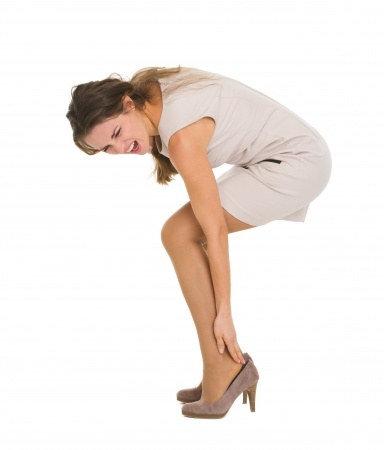The Painful Reality of High Heels
Preventing Long-Term Damage Related to High Heels
By ACE Physical Therapy and Sports Medicine Institute
Tips for High Heels.
- If you develop low back or lower extremity pain from wearing “heels” seek advice and treatment from a Physical Therapist.
- A one-inch heel increases the forefoot pressure by at least 20% and a three-inch heel raises it beyond 70 %.
- If you buy a high heel shoe, try to purchase one that has a platform under the forefoot.
- If you wear “heels” most of the time, be sure to stretch your calf muscles. Perform the stretches with a straight and flexed knee.
- Try to wear your “heels” when you are going to do a minimal amount of walking.
Wearing high heels can make a dramatic fashion impact, but they can also dramatically impact your lower back, knees, ankles and feet. High heels pain describes the short term and long term orthopaedic “problems” associated with high heels. While almost any type of shoe can be worn for a short duration without causing harm, a raised heel shoe can lead to a range of problems the longer it is worn.
High Heels Pain and the Problem of Posture
The design of the human body allows us to move by expending the least amount of energy and be to be able to withstand the natural forces that are placed on us during an activity. Proper posture makes this possible by placing every joint near the optimal position to move. Proper posture can be summed up as the most comfortable position for all body parts: once someone is used to it. Improper posture can cause too much excess force, damaging the joint structures.
When standing with no shoes on, the spine is erect and the shoulders are in line with the ears. The arms hang by the side of the body with the hands in line with the Greater Trochanter (bone that is at the top of the upper leg bone (femur) and on the side of your leg). Your knees are straight and your ankles are at a 90-degree angle. When you put on a shoe that has a heel, your body must make numerous neuromuscular adjustments to maintain the “proper” postural position. The height of the heel will determine the amount of adjustment that must occur to maintain the body’s desired postural positioning.
High Heels Pain Throughout Your Body
Wearing high heels can lead to pain and even damage in your lower back, knees, ankle and feet.
Low Back: When your heel is raised off of the ground, your center of gravity is moved forward. You have to increase the lumbar lordosis (hyperextension) and lean backwards if you are going to stay erect and not fall on your face. High heels can cause subtle changes, forcing the muscle structure to “work” harder to maintain an upright position. When these shoes are worn too frequently of for too long of a period of time, these low back muscle actually “shorten” and lose some of their flexibility.
Knees: When a lady walks in high heels, the anterior tilt of her pelvis changes. This causes a change in the position of the Femur, which increases anterior knee pressure. As a result, the kneecap may hurt when walking. Walking up inclines or on stairs can be very painful. Often times the Femur adjusts and there is increased varus at the knee. This places more pressure on the inside compartment (medial side) and can lead to increased pain especially if someone has an arthritic knee.
Ankle: When heels are worn, the ankle is in a constant plantar flexed position. There is increased anterior ankle pressure and the posterior muscles of the calf are shortened. Any muscle that is too long or short is going to lose some of its strength. High heel use can lead to calf muscle or Achilles Tendon injuries. Additionally, the reduced surface area of the heel can cause a person to have less balance, and ankle sprains are common.
Feet: When heels are worn the there is an increased amount of pressure on the forefoot (the knuckles of the foot). As the heel gets higher, the pressure increases significantly. Most high-heeled shoes have a narrow toe box that forces the forefoot and toes to be crammed into the front of the shoe. The average female forefoot is approximately 3+ inches in width while the average toebox is less than 2 ¾ inches. “Cramming” the front of the foot into such a small width can lead to permanent changes in the foot anatomy. People who wear “heels” on a regular basis commonly suffer from bunions and corns after they turn 40.
While heels may be fashionable, they also cause major orthopaedic problems for many people. The use of high heel can be attributed to low back and lower extremity pain in almost every part of the leg. Simply wearing a lower heel will greatly reduce the frequency and chance of developing an orthopeadic problem. When you choose to wear heels, be sure to do it limited quantities of time.
Read more articles on our main website blog at: ACE-pt.org/blog
Vist our main website at: www.ACE-pt.org


